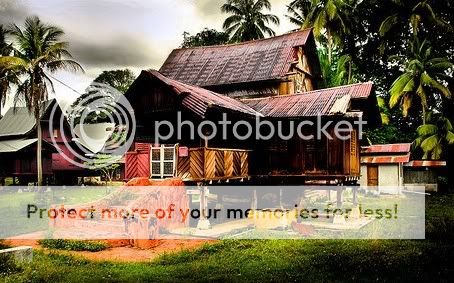One of the major reasons to look overseas for retirement is to find cheaper housing. By shifting wealth out of expensive housing (the USA and western countries) into cheaper housing (developing nations), a retiree/investor can free up more cash for daily needs. One of these developing nations that is beginning to come onto the horizon is Malaysia.
Cities
The most popular cities for expat retirees -which comprise mainly Japanese, Korean, and British expats- are Penang and Kuala Lumpur. Johor Baru, in the south, has always been popular with Singaporeans as it is only across the causeway and much cheaper than housing on the island state. Housing in those three places tend to be the most expensive in the country, however, so there is a trade off between being part of those vibrant expat communities and keeping your costs down. For those on more restricted budgets, I suggest smaller cities outside the Kuala Lumpur/Penang metroplexes, such as Kuala Terengganu and Kuantan on the east coast, Alor Setar, Sungai Petani, and Taiping in the north, and Negri Sembilan in the mid-south. Additionally, Malaysia has two states on the island of Borneo, and the cities of Kuching (Sarawak) and Kota Kinabalu (Sabah) are more reasonable in price than KL and Penang.
While expats are not restricted to living in cities, the culture in rural locations probably does not suit the majority of expats, especially if they come with more developed lifestyles. But, if you don't mind watching the grass grow, then there are multitudes of smaller towns that have beautiful shoplot downtowns and a greater sense of community. For the mo re daring yet, it is possible to find a house to buy in a kampung, but expect it to be noisy (neighbor boys on motorbikes), smelly (open-burning year-round), and full of watchful eyes.
re daring yet, it is possible to find a house to buy in a kampung, but expect it to be noisy (neighbor boys on motorbikes), smelly (open-burning year-round), and full of watchful eyes.
(Photo right: Kampung house)Cities
The most popular cities for expat retirees -which comprise mainly Japanese, Korean, and British expats- are Penang and Kuala Lumpur. Johor Baru, in the south, has always been popular with Singaporeans as it is only across the causeway and much cheaper than housing on the island state. Housing in those three places tend to be the most expensive in the country, however, so there is a trade off between being part of those vibrant expat communities and keeping your costs down. For those on more restricted budgets, I suggest smaller cities outside the Kuala Lumpur/Penang metroplexes, such as Kuala Terengganu and Kuantan on the east coast, Alor Setar, Sungai Petani, and Taiping in the north, and Negri Sembilan in the mid-south. Additionally, Malaysia has two states on the island of Borneo, and the cities of Kuching (Sarawak) and Kota Kinabalu (Sabah) are more reasonable in price than KL and Penang.
While expats are not restricted to living in cities, the culture in rural locations probably does not suit the majority of expats, especially if they come with more developed lifestyles. But, if you don't mind watching the grass grow, then there are multitudes of smaller towns that have beautiful shoplot downtowns and a greater sense of community. For the mo
 re daring yet, it is possible to find a house to buy in a kampung, but expect it to be noisy (neighbor boys on motorbikes), smelly (open-burning year-round), and full of watchful eyes.
re daring yet, it is possible to find a house to buy in a kampung, but expect it to be noisy (neighbor boys on motorbikes), smelly (open-burning year-round), and full of watchful eyes.Housing - For Purchase
Malaysia has the usual range of housing for purchase available, from the very cheap -old link houses in smaller cities outside the capital metroplex- to the high-end condominiums and bungalows in the exclusive neighborhoods sought out by politicians, business leaders and wealthy expats. Thus, Malaysia has something to offer for almost any possible retirement budget. The restriction on expat retirees, however, is that there is a minimum purchase requirement that is RM250,000 for nearly all states. At the current exchange rate of ~RM3.60 to US$1, this equates to a purchase price of US$69,000. It used to be only RM150,000 in most areas of Malaysia -when I bought- and this meant that for the equivalent of a downpayment in the USA (~US$40k), one could buy a house in Malaysia outright.
At this time, foreigners are limited to buying semi-detached houses (known as duplexes elsewhere), bungalows (stand-alone houses), or condominiums/apartments. Foreigners cannot buy link houses, the most common housing available. Link houses mean that every house is linked side-by-side with only the end houses having space to the side of the house.
Housing - For Rent
Expats can rent link houses, which come in 1-, 2-, and 2.5-story varieties. A typical two-story link house in KL will run RM1,500-3,000 per month depending upon location and whether or not it is an intermediate link house, or one of the end lot houses. I rented a two-story link house in one of the newer subdivisions in Petaling Jaya, one of KL's main suburbs, for RM1,300, and the house had four bedrooms, three bathrooms, and a nice sized living room (around 2500 sq. ft.). Later, I moved to the east coast, where I rented a five-bedroom semi-detached house (5 bedroom, 3 bathroom, around 3000 sq. ft) for only RM800. In fact, in my current location, link houses rent for as low as RM400 per month, barely US$100 per month!
Semi-detached houses (duplexes) are typically single- or double-story with at least two bedrooms and at least two bathrooms. They can be as small as 1000 sq. ft. to perhaps 2000+, for double-story houses. Typically the largest bedroom is the master, with an attached bathroom. There is almost always another bathroom and one or two smaller bedrooms. Many Malaysians hire live-in maids, and thus, the houses contain a very small room off the kitchen for use by the maid. Without a maid, the room is really only suitable for storage. Bungalows are much larger and can run up to 5000 sq. ft. or more, and tend to have much larger compounds.
It being the tropics, Malaysian houses these days are built out of concrete beams, with brick walls filling in the space and cement facing on the brick. They are not as cool as the old-style kampung (village) houses that were made from wood and naturally ventilating. Oddly enough, wood is very expensive in Malaysia, and only the rich can afford to build from the rich tropical timber varieties. One of the newly-retired is Jean Todt, he of Ferrari fame and the husband of Malaysia's own Bond-girl Michelle Yeoh. They have built a large retirement house in the east coast city of Kuala Terengganu which is said to have used special craftsmen in timber framing and accents. Not everyone will have the money to throw around like them, but for even the moderate well-off, Malaysia has much to offer.
Buyer Beware
For years Malaysia had only the sell-then-build policy for housing areas. Developers put together beautiful plans and dioramas, replete with glossy photos of what the development would look like after completion. Potential buyers would queue up to make their selections and make downpayments (typically 10-20%). And then they would wait. Often several years would go by before the development was complete. Housing was typically cookier-cutter in that every house was exactly alike and people would spend another 30-50% of the purchase price on remodelling their house. The problem is that the developments inevitably turned out NOT to look like the glossy photos or dioramas. And worse things happened especially when developers went bankrupt and left the owners with nothing to show for their downpayments.
These days, however, more developments are along the line of build-then-sell, and expats can get a good look at what is actually in place before buying, or renting. Condominiums, however, can be problematic in that the value-added amenities (e.g., swimming pools, exercise gyms, walking parks) tend to fall into disrepair quickly for a couple of basic reasons. First, many Malaysians prefer to park their investment money into real estate and, thus, there can be places where few owners occupy their houses or apartments, preferring to rent them out to people who have no vested interest in upkeep and maintenance. Secondly, developers will turn over the management of places to management agencies or groups, who have little enforcement strength to keep the monthly maintenance fees coming in.
I would be very careful, therefore, in purchasing from a plan or diorama. In fact, it is probably best to find a location that has predominantly owner-occupiers. This may mean avoiding areas that are owned by certain racial groups (the people who look at housing as investment), and rather looking at areas owned by groups of people with a greater sense of community and are themselves close to, or already in, retirement. It is this latter group that I joined when I made my house purchase in 2005.














found your blog very informative. thanks so much for posting. I would love to chat with you via skype or email if possible as I am thinking about buying some property in Malaysia.
ReplyDeletelextalionis2001 at yahoo dot com
Okay, email coming your way. The government and state of Pahang have raised minimum investment requirements for house purchases since I wrote this post. Thus, Malaysia is NOT as attractive as before. Renting is still cheap, but home purchases are no longer.
ReplyDelete